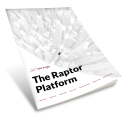You want to get your vehicle to production fast but can’t swap performance or safety for speed. One of the best ways to meet vehicle development milestones without sacrificing quality is by using model-based design (MBD).
Unlike traditional design methods, this rapid design-and-simulate process of creating embedded software lets developers prototype, test, and verify their complex control systems quickly – while involving other stakeholders and staying on budget. The iterative process results in better and more cost-efficient designs, and fewer coding headaches.
What’s the theory behind model-based design?
The motivation behind model-based design is agile product development. An agile process gives engineers working on complex applications the flexibility to find and fix issues earlier in the development process.
MBD enables three rapid-development practices:
#1: Designing in a loop, not on a ladder
Traditional waterfall design methodology works if the design is simple and static—and causes a lot of frustration and delayed timelines if it isn’t.
There are two fundamental problems with using the waterfall model for vehicle development. First, we live in a world where goals and needs are always in flux. Second, vehicle control systems are complex.
MBD lets engineers create sophisticated control systems using a more agile loop-like structure. The flexible process enabled by MBD gives engineers the freedom to jump between stages and address issues as they arise without disrupting the project timeline.
#2: Developing on production controllers
If you prototype your code on one set of hardware and then have to port that over to production hardware, you’re adding in both time and cost. But model-based development tools like New Eagle’s Raptor Suite avoid those challenges by letting you use the same software and hardware for prototyping as you do for production, so you’ve streamlined your path to market.
And with today’s iffy supply chain, using a single set of hardware ensures you have the supply you want, when you want it.
#3: Generating code automatically
Raptor MBD employs data-driven automatic code generation and block-oriented workflow to speed up coding at every stage. This releases application engineers from the tedious and time-consuming task of embedding code manually, and gives them the ability to make changes even when they’re late in the development process.
Plus, Raptor allows you to save data and models from previous tests and use them in later designs. You can always build on your earlier discoveries instead of starting from scratch with every new program.
Speed up your cycle with New Eagle Raptor
Curious about how Raptor Suite model-based design tools help our partners get their ideas to market faster? Contact a New Eagle sales representative or check out our line of Raptor tools.




